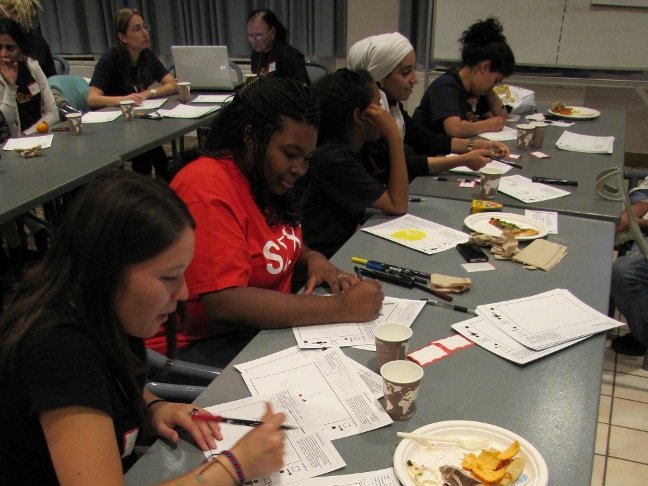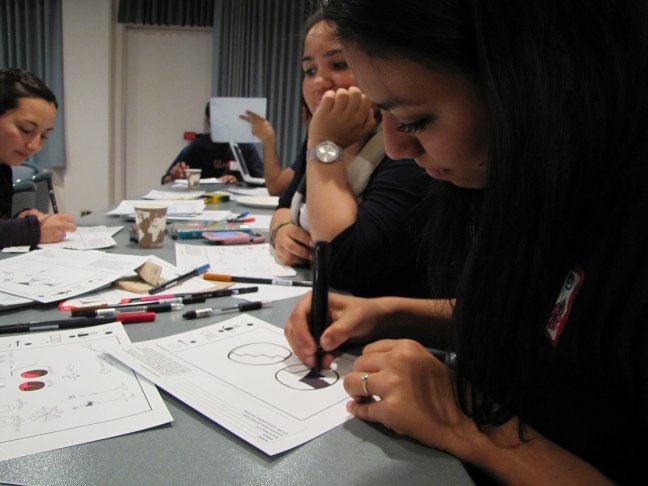An iConji Communications Workshop
Colorado State University, Office of International Programs
On April 7, 2011 Colorado State University's (CSU) Office of International Programs hosted an evening in which forty students representing more than a dozen countries came together for three hours to facilitate creation, conversation, and learning about cultural identity through art expression and communication.
The evening began with an introduction to the history of iConji, and a demonstration of how to use iConji with Facebook. The inventor of iConji, Kai Staats, assisted by graphics artist Bennett Scott, then provided an introduction to the structural elements of an iConji character and guidelines on how to create a new character. Participants were given a list of words to choose from which were not yet in the existing vocabulary, or they could choose one on their own. For more than an hour, groups sketched images to represent words and concepts and then shared them with the entire assembly. Open conversation unfolded as to whether or not the drawings were universal, that is, if they would be recognized worldwide.
Megan Schoenecker, International Programs Assistant at CSU offers “The cross-cultural aspects of the event invoked interesting insights into image association as it varies from culture to culture. The event brought these differences to the surface, sparked great discussion, and manifested understanding among the group."
Some of the discussions that unfolded were as follows:
- The "right" hand has been equated as "good" and the "left" hand with bad for millennia. The Latin roots for "dexterous" and "sinister" refer to "right, correct" and "left, wrong" accordingly. In French, "à droit," or in English "adroit" means dexterous or skillful.
- "Thumbs-up" and "thumbs-down" may not be a good thing in all countries!
- Does a neck tie represent dressing-up in all countries? The dishdash is in some cultures the most dressed up one can be, while the neck tie is a Western style relatively recently introduced for business, but not formal occasions.
- Does the $ sign represent "money" in all countries? Not too long ago, the British pound was the dominant currency in the world. What happens if the Chinese yuan becomes the dominant currency, will all U.S. computer keyboards ship with the yuan symbol in addition to the U.S. dollar sign?
- In the effort to create the characters for "victory" and "defeat" one of the participants drew sketches of a sword stabbed into the ground, both with and without a helmet on top. Drawing from historic battlefield etiquette, which would you believe meant the soldier was yet alive, awaiting removal by the medical brigade?


